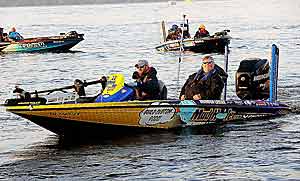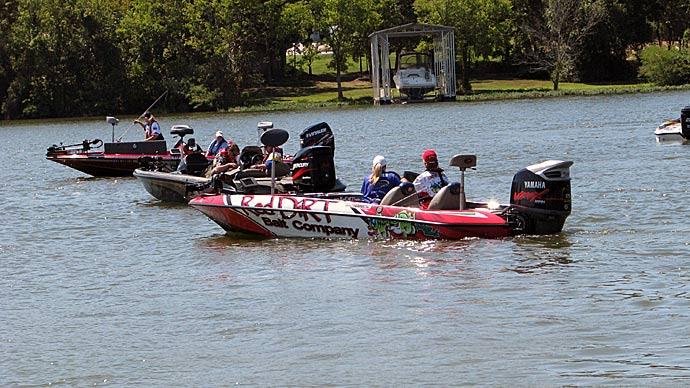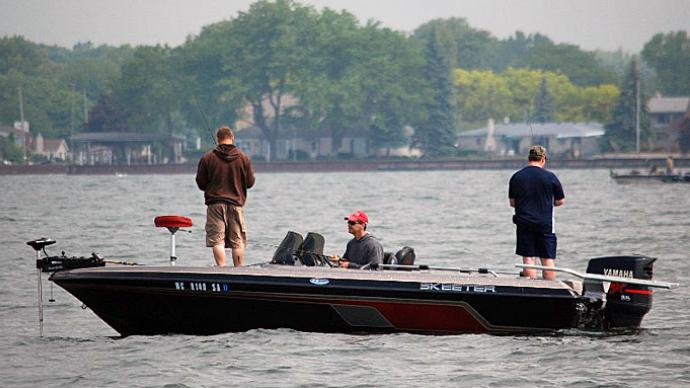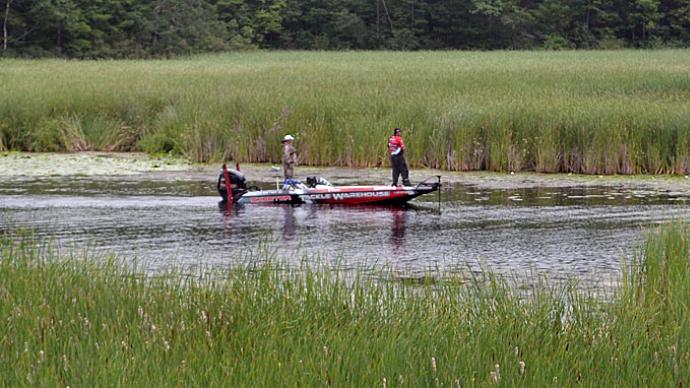
For recreational boaters, a simple fall overboard is the number one boating accident "event" that leads to the most fatalities. The U.S. Coast Guard reports that last year, 275 persons died in 721 boating accidents that began with or involved a fall overboard. While some of these accidents involved other factors, getting back in the boat quickly - without help - isn't easy, as a BoatU.S. Foundation test of 11 portable boarding ladders recently found.
"A fall into the water can turn into a life-threatening situation very quickly," said BoatU.S. Foundation President Ruth Wood, "It doesn't take long for exhaustion or hypothermia to drain the life out of you. Boaters and anglers need to be prepared, especially if they are alone. It can happen to you."
While many larger boats have built-in boarding ladders, the Foundation tested portable models on a 17-foot Boston Whaler, 14-foot Jon boat, and 12-foot rigid-hull inflatable. What follows are five essential tips that will help ensure a fall overboard doesn't become tragic.
1. Wear your life jacket. All BoatU.S. volunteers participating in the testing program wore a life jacket - before they voluntarily went over the side. All agreed that a fully clothed adult with no buoyancy would have difficulty getting back aboard using any ladder.
2. You don't need to spend much on a functional boarding ladder. Testers found an affordable model fashioned from four-inch wide yellow webbing proved best. Simplicity also ruled the day as the highest-ranked ladders all had fewer than three steps. The ideal ladder length, measured from the water's surface to the bottom rung, averaged 20 inches.
3. Some ladders work better with certain types of boats. Hard sides or soft? Low or high freeboard? Depending on a boat's construction or deck layout, most ladders performed well with one particular kind of vessel and did poorly with others. It's essential to match the ladder to the boat.
4. Before you head out, your boarding ladder needs to be positioned so it can be reached from the water. Also, attaching the ladder to the wrong spot on a narrow, lightweight boat can increase the chance of capsizing, especially if there is wave action.
5. Practice is a must. Many ladders were challenging to use on the first try. You can take the time on a warm, sunny day to fine-tune any adjustments, get in the water and use the ladder. Some ladders threw testers off-balance when weight was placed, causing the device to swing underneath the boat. Only practice solved this problem.
The BoatU.S. Foundation for Boating Safety and Clean Water is a national 501(c)(3) nonprofit education and research organization primarily funded by the voluntary contributions of the 650,000 members of BoatU.S. The Foundation operates more than a dozen programs, including the only accredited, free, online general boating safety course, a low-cost EPIRB rental program, the "Help Stop the Drops" national clean fueling campaign, and a free kid's Life Jacket Loaner Program. It has awarded hundreds of thousands of dollars in grants to nonprofit groups for boating safety and environmental projects.




